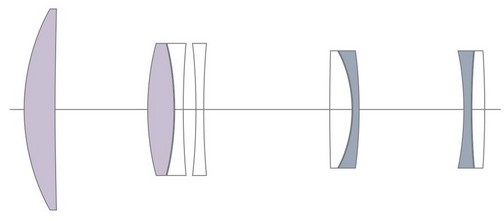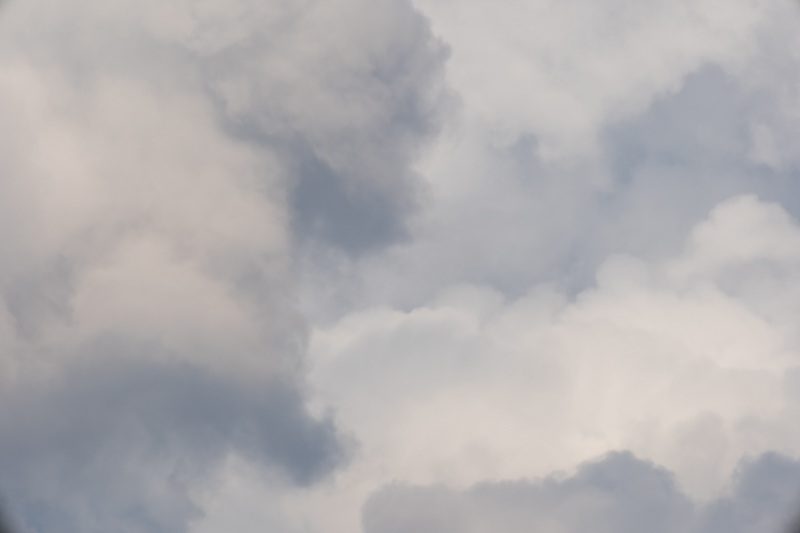Introduction

The Chinese manufacturers have been busy releasing lenses in the 15-100mm range but only rarely set foot in the tele lens realm. And if they did, those were usually mirror lenses that may be compact but have plenty of other issues.
When TTArtisan asked me if I want to have a look at their new 500mm f/6.3 lens I was hesitant at first, as this is also not a focal length I need or use regularly.
But when I heard it uses ED elements, it is an internal focus design and will cost only $329 I thought it might be worth a closer look, so here we are.
Sample Images





Most of the sample images in this review can be found in full resolution here.
Contents
Specifications
The TTArtisan 500mm 6.3 has the following specifications:
-
- Diameter: 88 mm
- Field of view: 5° (diagonally)
- Length: 317 mm
- Weight: 1616g (without caps)
- Filter Diameter: 82mm
- Number of Aperture Blades: 12 (rounded)
- Elements/Groups: 8/5


- Close Focusing Distance: 3.3 m
- Maximum Magnification: 1:6.3
- Released: September 2023
- Mount: Sony E-mount, Nikon Z, Canon RF, L-mount
buy from manufacturer’s shop, B&H, amazon.de, ebay.com for $329 (affiliate links)
Disclosure
The TTArtisan 500mm 6.3 was kindly provided free of charge by TTArtisan for reviewing purpose for a few weeks.
Handling/Build Quality

The TTArtisan 500mm f/6.3 is also being marketed as cine lens so it features gears on the focus as well as on the aperture ring.
The build quality feels solid, like all the TTArtisan lenses I have used so far. Markings are engraved and filled with paint.
The focus ring has a very high resistance, I would have actually wished for it to be a bit easier to turn. It rotates a little more than 180° from infinity to the minimum focus distance of 3.3 m.
The aperture ring is clickless and rotates 90° from f/6.3 to f/32. The stops are spaced equidistantly.
The tripod collar is removable but unfortunately it does not feature an arca profile.

The lens also ships with a very short screw-in hood. Usually the hoods for lenses in this focal length range are significantly longer.
Vignetting

With lenses featuring such a long focal length vignetting is usually nothing to worry and hardly worth talking about. Here the situation is a bit different though, as the extreme corners are pretty much black at all apertures.
There are two possible reasons for this: either the image circle of the lens is 1-2 mm too small or the corners are obstructed because of the narrow E-mount diameter, something we also saw with some of the projector lenses I tried.

Sharpness
infinity (42mp Sony A7rII)


With a 500mm lens there are several factors influencing the achievable image quality and some of them may actually be more important than the lens’ optical quality itself.
First camera shake can be an issue. And your camera’s IBIS is not even remotely as effective with a 500mm lens as an in lens stabilization could be.
If you want to use a tripod, you need a tripod with an appropriate head that will cost you way more than this lens. I have been using a Gitzo Series 4 with an Arca Swiss P0 head – a setup costing more than one grand – and the head is actually too weak to comfortably use a 500mm lens. If you are thinking of using this lens on a dinky travel tripod for 100 bucks: forget about it, this will only end in frustration, even with 10 sec self release.
And then there is heat haze. Especially during hot summer days this is a huge problem if you try to take pictures of something far away with a long lens. But even on a not-so-hot day (that I used for taking these pictures) all the particles in the air will steal away some of the contrast.
Resolution and contrast are a bit lower at f/6.3 compared to f/8.0 and f/11, but the difference is not huge. From what I see I think this lens has been optimized for infinity distance, so let’s see how it performs at closer distances next.
close 3.3 m, 1:6.3 (42mp Sony A7rII)
100% crops from center, A7rII
A minimum focus distance of 3.3 m may not sound that great when you are used to shorter focal lengths, but when dealing with a 500mm lens it even allows for a maximum manification of 1:6.3, which is quite impressive.
With a lens only starting at f/6.3 you would hope for great sharpness from there, but this is sadly not the case here. Stopping down to f/8.0 or better f/11 is going to give you much crisper pictures so here stopping down makes more of a difference compared to infinity.
I repeated this test several times to rule out any issues caused by misfocus or camera shake.
Distortion
There is no field relevant distortion.
Bokeh
Thanks to its long focal length there is a lot of bokeh at closer focus distance, even stopped down to f/16 as you can see from this comparison above. We also see here again that the pictures are a bit low contrast at f/6.3.

When taking pictures at or near the minimum focus distance, backgrounds simply melt away – a strength of long tele lenses.

Also at longer focus distances the bokeh is quite nice. Because of the limited flexibility of a 500mm prime lens it was difficult to nicely frame one of the warthogs though.
Chromatic Aberrations
lateral
Due to the TTArtisan 500mm 6.3 featuring several ED elements I was hoping for a good performance in this category, but sadly the performance reminds me more of old tele lenses without ED elements. The outlining is strong and the correction in Lightroom/CameraRAW is also not able to fully fix this.
longitudinal
As can be seen from the sample above the trend continues here, also in high contrast out of focus areas we see several pixels wide outlining.
Conclusion
This 500mm 6.3 IF ED is TTArtisan’s first long range telephoto lens and – as was already the case for some of their previous lenses – its price tag ($329 in this case) will surely raise some eyebrows.
There have actually been some very cheap 500mm f/8.0 lenses on the market under different names (e.g. Danubia, Dörr or Beroflex) before, but these have been extremely simple designs: no internal focus, no ED elements, generally low element count (so low they don’t want to disclose in their spec sheets) leading to low resolution images with low contrast.
This TTArtisan lens is a step up in terms of image quality compared to those lenses, but not one as big as I had hoped for. Despite the usage of ED elements I found this lens to show strong CA and at f/6.3 at closer distances the contrast is also too low for my taste, so it felt more like a 500mm f/8.0 lens to me.
Because of its low price this lens may also attract customers who don’t have any experience with such long lenses. But let me tell you: this is not an easy-to-use lens.
As I would recommend to use this lens at f/8.0 to f/11 you need a lot of light to use it without support. This makes a solid tripod pretty much mandatory. A 500mm prime lens also isn’t very flexible, sometimes it is even hard to “find” your subject.
And after finding your subject you have to set the focus correctly, this already isn’t easy for steady subjects and it will be extremely difficult for anything that moves.
So personally, I only see limited applications for this lens. If you want to take pictures of the moon this is not a bad option, especially on an APS-C camera. Planespotting is another application I could think of and maybe staged setups for wildlife photography, where you know the focus distance before, so you can prefocus correctly (e.g. a tree branch next to a stream where you wait for a kingfisher to show up).
buy from manufacturer’s shop, B&H, amazon.de, ebay.com for $329 (affiliate links)
Alternatives
There are no direct competitors available on the market at this price point. If we are looking at more expensive lenses the Tamron 150-500mm 5.0-6.7 Di III VC VXD for $1399 comes closest. Weight, size and maximum aperture at 500mm are similar, yet it offers AF and an optical stabilizer and being able to zoom out to 150mm makes framing a whole lot easier.
For the same price as the Tamron, Sigma also offers a 400g heavier 150-600mm 5.0-6.3 lens.
I actually expect these Tamron and Sigma lenses to perform a bit better in terms of vignetting, sharpness and CA correction than the TTArtisan lens being reviewed here – I haven’t used any of these long range telezooms personally though, so I might be mistaken. You can find their basic data and some additional information on them in our FE Guide.
Sample Images




Most of the sample images in this review can be found in full resolution here.
Further Reading
- Sony FE lenses: Our comprehensive and independent guide
- Guide to the best 85-135mm Portrait Lenses for Sony a7 series
- Best fullframe lenses from China
- Join our Discord community
Support Us
Did you find this article useful or just liked reading it? Treat us to a coffee!
![]()
![]()
![]() via Paypal
via Paypal
This site contains affiliate links. If you make a purchase using any of the links marked as affiliate links, I may receive a small commission at no additional cost to you. This helps support the creation of future content.
Latest posts by BastianK (see all)
- Review: Canon EF 50mm 1.0 L USM – Still the world’s fastest AF lens - December 30, 2025
- Review: Nikon Nikkor 105mm 1.8 Ai-s - December 28, 2025
- 2025 – Year in Review - December 23, 2025











Yeah, another a bit more complicated story, a lens that you may consider at first glance, than longer you think about it less application you find for it (where it’s good at). There are no new competitors for a similar price, but maybe used (old models) 150-500ish mm lenses could be an alternative (I haven’t used those, I know some are visibly better than others). Personally, I’d go only for a stabilized 300+ mm lens, because I know my limitations. A sniper course, to learn about holding one’s breath properly and calm the pulse etc. would cost more than such a lens, and it wouldn’t help much either. 🙂
The alternatives I think of are mirror lenses like the Sony/Minolta AF 500mm F8 Reflex or the Sigma 600mm F8. Samyang produced several of those and some long refractors more like this TTArtisan: https://www.bhphotovideo.com/c/product/802672894-USE/samyang_sy500p_500mm_f_8_0_preset_telephoto.html/accessories
The rendering of this lens actually reminds me a bit of the Samyang 135/2 UMC; which is to say good. However it seems like the user experience is similarly sluggish.
It does however make for an interesting offer at the price point for people that want to do bird spotting or plane spotting. I’m glad TTArtisan is putting the option out there.
your sample pics look lovely, despite the negative review.
I am always trying 🙂
Also ich habenoch das alte Novoflex Schnellschuss Objektiv 8,0/600 mm und benutze es noch ab und zu !
Optisch ist es nicht schlecht ,aber sehr unhandlich.
Das oben genannte Tamron 150-500mm habe ich seit 2 Jahren und bin zufrieden. Um den Umgang mit 500mm zu lernen ist das TT Artisans bestimmt nicht von der Hand zu weisen.
Thanks for reviewing this Bastian. It’s price tag is alluring, but I’m not sold. I think any lenses like this one need IS to be useful IMO.
I use the Canon FD 300mm f4 L with a 1.4x TC (420mm f5.6). It takes very nice pictures without the TC, but I don’t feel the same with with the TC. I also find myself frustrated trying to shoot wildlife with it as 300mm is often too short, and 420mm f5.6 (without image stabilization) requires too much light to use during peak wildlife hours (Sunrise and Sunset +/- 30 minutes).
Since I have the Nikon monster adapter, I’m hoping to snag the Nikon VR 200-500mm f5.6 eventually which can be consistently found for less than $800, takes gorgeous images, has IS, and has AF.
Hi Bastian,
Thank you for that informative review. I was very curious about the performance from this lens. Well, f/6.3, 500mm und 2 ED elements soundet too good to be true.
What really disappointed me, is the huge amount of CA´s. So where are the benefits from using ED- and high refractive glass lenses?
You mentioned the old and simple 8/500 lenses from Beroflex, Danubia, etc… Since I dissassembled an old Beroflex lens many years ago, I can tell you, that it uses a simple 4/4 design. 2 lenses in the front group, that are moving away from the 2 lenses in the back group, when beeing focussed. This lenses weren´t too bad. They have a very flat field, not too much CA´s and an acceptable resolution. They flare like hell, when turned towards the sun.
I have now the old Sigma Apo 7.2/500 (manual focus), the Nikon 4/500 (AIS-P Nikkor, manual focus). The Nikon is better by all means and you can get it quite cheap on the used marked. The Sigma is very small, and a bit behind the ttartisan, but not by much.
Now, the real benchmark in my opinion is the old Minolta MD 6.3/600mm. It uses one lens made of fluoriteg-glass (or crystal) and shows very high resolution, outstanding sharpness, very even performance untill the edges and: it has nearly zero CA´s. Ok, this lens is hard to find, and very expensive, but you get what you pay for… I was lucky finding one for a very cheap price 🙂
The ttartisan is an interesting lens for all photographers who don´t want to pay an arm and a leg for buying a 500mm telephoto lens. So in my opinion this lens make sense, but you have to accept some imperfections, but this lens would be my choice before buying a catodioptric mirror-lens…
Best regards,
Christian
We also shouldn’t forget that these mirror lenses usually have disastrous T-Stops.
Thank you Bastian. I was really interested in the lens – I have an excellent tripod, but the head comment made me pause. I currently use a 100-400 Sigma with an mc-11 for my a7riii. I eventually hope to get a 150-600; but I use it so infrequently that I think I might rent something next time I go out.
PS your reviews are great!
Thanks so much for taking the time to review this lens. I was very curious how it might perform with ED glass compared older designs. Disappointing to see quite a few color problems still.
I suspect my Canon FD 300/4L with the 1.4x TC would out perform this even needing to crop to get from 420 to 500mm. Possible the TTArtisan could still win on resolution though. The Canon is not entirely free from CA issues, but they disappear completely by one stop down.
For telephoto landscapes the Tamron SP 500/8 probably doesn’t give up too much and a more workable setup on flimsier tripods. Mirror lenses have a number of compromises, but it appears this refractor does too.
And yes – good tripod support is a must – even with IBIS! I know working with my SP 500/8, which is far easier for a tripod to handle, can be a pain to focus even on a decent ball head with IBIS enabled.
Also, one thing I really wish these Chinese manufacturers would learn is that heavy does not equal quality. This 500/6.3 offering is over 1.6 kg with its foot. By comparison, the Nikon Z 400/4.5 which has 19 elements, a larger front element, and a much larger hood comes in at 1.25 kg with its foot and caps. Of course the Nikon is far more expensive and went to great pains to keep the weight down, but still that’s a big difference in weight give the TT is only an 8 element lens.
I almost suspect these manufactures have tucked lead into the lens body just so the YouTubers will say it has “solid build quality”. In which case I guess we should hold the manufacturers blameless if the reality is that the target market for these lenses are people that in fact believe that heavy does equal quality…
I have the Tamron 150-500 and given the samples its contrast is much better at 500 mm. I bought it when the Sigma 150-600 wasn’t available yet, which I’d prefer now, because it is the same price. It is my first tele zoom. I don’t like the Sony 200-600 internal focus design, because it makes the lens huge for transport.
I was also temped by these cheap Danubia lenses first, but the disappoitment isn’t worth the money you “save”. Photo gear is expensive in general and I don’t think this particular lens makes sense for most of the situations.
The Tamron 150-500 has minimal focus distance 60 cm at 150mm so it can be used as a macro lens too 🙂
It’s neat that they’re making this. It’s a heck of a lot of reach for the price, and not too dark. A shame about the supplied tripod collar not being natively Arca Swiss compatible, but it seems like a decent offering for a budget lens.
And yet… I dunno. I think I’d have rather seen them do some shorter telephotos. 200mm f/4 was a classic film SLR lens, often rather small and light, and still really practical. 500mm can be pretty hard to use, and something more modest like a 200mm would be a lot easier. I’ve sometimes stuck a Pentax-M 200mm on my Fuji, and a fairly usable walk-around lens, whereas my Pentax-A 400/5.6 is a big challenge.
I have repeatedly urged TTArtisan to built something similar to the Sigma 400mm f5.6, which was a great lens that should be possible to improve significantly with modern glass, coatings, and more sophisticated design.
Just received the GFX mount version. A Fujifilm 500mm is promised for this year but I could not justify the cost as it will be infrequently used.
One thing of note – the tripod foot now has an arca swiss profile.
I would assume all versions now have this.
Useful change!
Thank you so much for the review Bastian. I use a Zuiko MC 300mm f4.5 and have been looking at a canon nFD 400mm f4.5 as an upgrade. Would this lens have a similar optical performance as the zuiko, or am I better off with the nFD? My other option is something from the L line, but the prices start to look too close to new lenses at that point. I use these on a good monopod or on the ground with a short tripod, but would need a little more reach on a second body to get the other side of a lake.
I don’t know all the specifics, but I think the difference between 300mm and 400mm might not be enough to warrant the purchase of the 400mm 4.5.
This TTArtisan, it worked best around f/8.0 to f/11 for me. If that is sufficient it might be worth a try.
Wanted to give an update, bought it on nikon f and I’m mostly using it on mft. Significantly easier to take pictures of birds from tripod and monopod, I have hand held in good light. It looks ok after some post processing. Not much sharpening needed at f8-11. It’s a bit softer than the panasonic 100-300ii at 300mm f7.1. The advantage is reach, this really lets me avoid getting too close to any small bird. It also works really well with the viltrox speedbooster to use as a 350mm f4.5 in lower light.
good to hear about this. was wondering if anyone tried adapting to m43. I may give this a go as well.
Great review! I’ll be honest, I’m a beginner and just looking for something to take nice moon shots, without breaking the bank. It seems like this might be the option I’ve been looking for.
Make sure you have a stable tripod.
Great review. Just enough detail to allow a person to decide if he/she needs it. And good comments on handling a long lens.
Thanks for this very interesting Review.
I want to add some experiances :
– Nailing Focus is indeed a big challenge – in particular with a stiff focussing ring – most missed shots in my protfolio is due to missing focus.
– any higher aperture Device (including the canon 4,5/500) is so heavy weight that you can’t hold ist at any time without a sturdy tripod (I own a Canon 2,8/300 which is way to heavy to hold it for more than a few minutes…)
– A very capable alternative is using a high end Bridge camera such as the Sony RX10 which provides a F4/600 long end reach with a top notch sharp lens and a blazing fast performance – image Quality is absolute comparable with a full frame camera (as you win several Aperture Steps in Light which compensates the higher noise level of the smaller sensor)